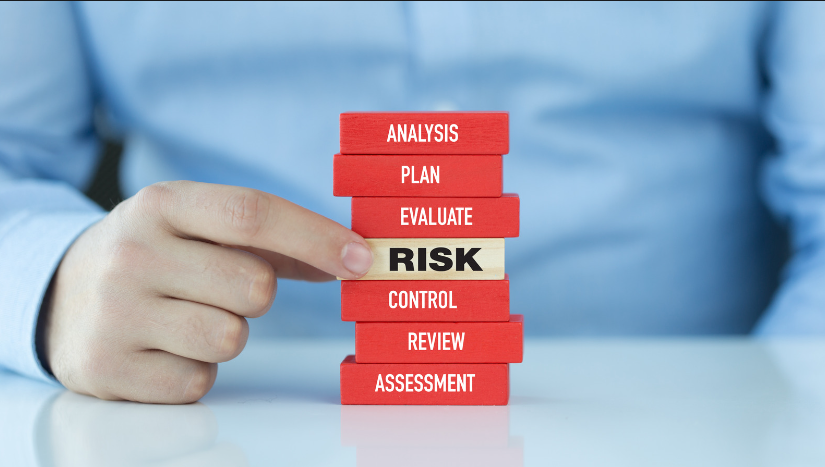In today’s digital age, understanding the distinctions between Disaster Recovery (DR) and Business Continuity (BC) is essential for any organisation aiming to maintain operations during and after a crisis. Both concepts are crucial for risk management but serve different purposes and involve distinct strategies.
Understanding Business Continuity and Disaster Recovery
Business Continuity (BC) refers to the strategic and proactive planning and processes that ensure an organisation can maintain its essential functions during and after a disaster. This involves ensuring that productivity, communication, and overall operations are sustained even when significant disruptions occur. BC planning includes risk assessment, business impact analysis, strategy development, and continuous testing and training.
The key goal of Business Continuity is to minimise operational disruptions by having a robust plan in place that addresses various potential threats such as natural disasters, cyber-attacks, and other crises. This plan is organisation-wide and focuses on maintaining all critical business functions seamlessly.
Disaster Recovery (DR) is a more reactive approach that specifically focuses on restoring IT infrastructure and data access following a disaster. It involves a set of procedures and technologies designed to recover lost data and resume normal IT operations swiftly. Key components of DR include data backup, recovery solutions, testing recovery procedures, and thorough documentation of all processes.
Disaster Recovery ensures that an organisation’s IT systems can be quickly brought back online after a disruption, minimising the downtime and impact on the business. It includes steps like developing a backup strategy, implementing recovery solutions such as cloud backup and virtual machine replication, regularly testing the recovery plan, and documenting all procedures for ease of execution during a disaster.
Key Differences
| Aspect | Business Continuity | Disaster Recovery |
| Focus | Maintaining business operations | Restoring IT systems and data |
| Timing | Before and during an incident | After an incident |
| Nature | Proactive | Reactive |
| Scope | Organisation-wide | Technology-specific |
| Objective | Minimising operational disruptions | Recovering IT functionality |
The Role of Business Continuity
Business Continuity is about ensuring that critical business functions can continue during a crisis. This involves comprehensive planning that addresses various potential disruptions, from natural disasters to cyber-attacks. Key components of a BC plan include:
- Risk Assessment: Identifying potential threats and their impact on operations.
- Business Impact Analysis (BIA): Determining the effects of disruption on critical business functions.
- Strategy Development: Creating strategies to maintain operations under various scenarios.
- Plan Development: Documenting procedures and responsibilities to ensure continuity.
- Testing and Training: Regularly testing the plan and training employees to ensure effectiveness.
Steps in Business Continuity Planning
- Risk Identification: Determine all potential risks, including economic crises, security issues, and natural disasters.
- Impact Analysis: Analyse how these risks could affect your business in terms of finances, personnel, and reputation.
- Current Plan Assessment: Evaluate your existing risk management plan to identify gaps and areas for improvement.
- Strategy Development: Develop strategies to maintain essential functions and minimise disruptions.
The Role of Disaster Recovery
Disaster Recovery focuses on the technical aspects of recovering from a disaster. This includes restoring data, applications, and IT infrastructure to ensure business operations can resume. Key components of a DR plan include:
- Data Backup: Regularly backing up data to multiple locations to prevent loss.
- Recovery Solutions: Implementing solutions like cloud backup and virtual machine replication.
- Testing: Regularly testing recovery procedures to ensure they work effectively in an actual disaster.
- Plan Documentation: Documenting all DR procedures and ensuring they are easily accessible during a crisis.
Steps in Disaster Recovery Planning
- Backup Strategy: Develop a comprehensive backup strategy that includes on-site and off-site backups.
- Recovery Solutions: Implement technologies like cloud backup, virtual machine replication, and disaster recovery as a service (DRaaS).
- Testing: Regularly test your DR plan to ensure it can be executed effectively during a disaster.
- Documentation: Document all recovery procedures and ensure they are accessible to relevant personnel.
Integration of BC and DR
While BC and DR are distinct, they are most effective when integrated into a comprehensive risk management strategy. This ensures that an organisation is prepared to maintain operations during a crisis and quickly recover from any disruptions.
Benefits of Integrating BC and DR
- Holistic Risk Management: Provides a comprehensive approach to managing risks across the organisation.
- Improved Resilience: Enhances the organisation’s ability to withstand and recover from disruptions.
- Streamlined Communication: Ensures clear communication and coordination between different teams during a crisis.
- Cost Efficiency: Reduces costs by integrating planning and resources for both BC and DR.
Examples of Business Continuity and Disaster Recovery Solutions
Microsoft Azure
Microsoft Azure offers comprehensive solutions for both BC and DR, enabling organisations to build robust plans and recover quickly from disruptions.
- Azure Backup: Provides secure and scalable backup solutions for data protection.
- Azure Site Recovery: Ensures rapid recovery of IT systems by replicating workloads to a secondary location.
- Azure Archive Storage: Offers cost-effective storage solutions for long-term data retention and recovery.
Microsoft Teams
Microsoft Teams supports business continuity by enabling remote collaboration and communication, ensuring that employees can continue working even during disruptions.
- Cloud-Based Collaboration: Facilitates remote work with cloud-based tools for communication and collaboration.
- Resilient Infrastructure: Ensures high availability and reliability with geographically dispersed data centres.
Importance of Business Continuity and Disaster Recovery for SMEs
Small and medium-sized enterprises (SMEs) face unique challenges and vulnerabilities that make robust Business Continuity (BC) and Disaster Recovery (DR) planning essential for their survival and success. These plans are critical in ensuring that SMEs can withstand and recover from disruptions, maintaining their competitive edge and operational integrity.
1. Minimising Downtime
One of the most significant impacts of disruptions on SMEs is downtime. Downtime can halt productivity, lead to financial losses, and damage customer trust. Robust BC and DR plans help to minimise this downtime by ensuring that critical business functions can continue and IT systems can be quickly restored. This reduces the overall impact on productivity and finances, allowing the business to maintain continuity and service levels.
2. Data Protection
For SMEs, data is a crucial asset. From customer information to proprietary business data, protecting this information is paramount. BC and DR plans include comprehensive data protection strategies, such as regular backups and secure storage solutions, ensuring that sensitive data is not lost during a disaster. Quick recovery of this data is also essential to resume normal operations without significant delays.
3. Quality Control
Maintaining the quality of products and services during a crisis is another critical aspect of BC and DR planning. Disruptions can lead to a decline in quality control, which can harm the business’s reputation and customer satisfaction. By having a solid BC plan, SMEs can ensure that their quality standards are upheld even in challenging circumstances. This involves planning for alternative production processes, securing supply chains, and maintaining stringent quality checks throughout a crisis.
4. Effective Communication
Clear and effective communication is vital during a disruption. BC and DR plans help bridge communication gaps within the organisation and with external stakeholders, including customers, suppliers, and partners. Effective communication strategies ensure that all parties are informed about the situation, the steps being taken to address it, and the expected timelines for recovery. This transparency helps maintain trust and reduces panic or misinformation during a crisis.
Key Reasons SMEs Need BC and DR Plans
- Operational Resilience: Ensures the business can withstand disruptions and continue operations.
- Financial Stability: Reduces financial losses by minimising downtime and ensuring quick recovery.
- Customer Trust: Maintains customer confidence by demonstrating preparedness and reliability.
- Regulatory Compliance: Helps comply with industry regulations regarding data protection and disaster preparedness.
- Competitive Advantage: Provides a competitive edge by being more resilient and reliable than competitors who may not have robust plans in place.
Conclusion
In summary, while Business Continuity and Disaster Recovery serve different purposes, both are essential for a comprehensive risk management strategy. BC focuses on maintaining operations during a crisis, while DR ensures rapid recovery of IT systems and data. By integrating both into their risk management plans, organisations can enhance their resilience, protect their assets, and ensure long-term success.
FAQs
- What is the primary difference between Business Continuity (BC) and Disaster Recovery (DR)?
Business Continuity focuses on maintaining business operations during a crisis, while Disaster Recovery focuses on restoring IT systems and data after a disaster.
- Why are BC and DR plans important for small and medium-sized enterprises (SMEs)?
BC and DR plans are crucial for SMEs to minimise downtime, protect data, maintain quality control, and ensure effective communication during and after a disruption.
- How does a BC plan help in minimising downtime?
A BC plan includes strategies and processes to ensure that critical business functions can continue during a crisis, reducing the impact on productivity and finances.
- What are the key components of a Disaster Recovery plan?
Key components of a DR plan include data backup, recovery solutions, regular testing of recovery procedures, and thorough documentation of all processes.
- How do BC and DR plans improve communication during a crisis?
BC and DR plans establish clear communication strategies to inform employees, customers, suppliers, and partners about the situation and recovery steps, maintaining transparency and trust.
Click here, to know more about Guide to Cyber Insurance for Small and Medium Enterprises (SMEs).









